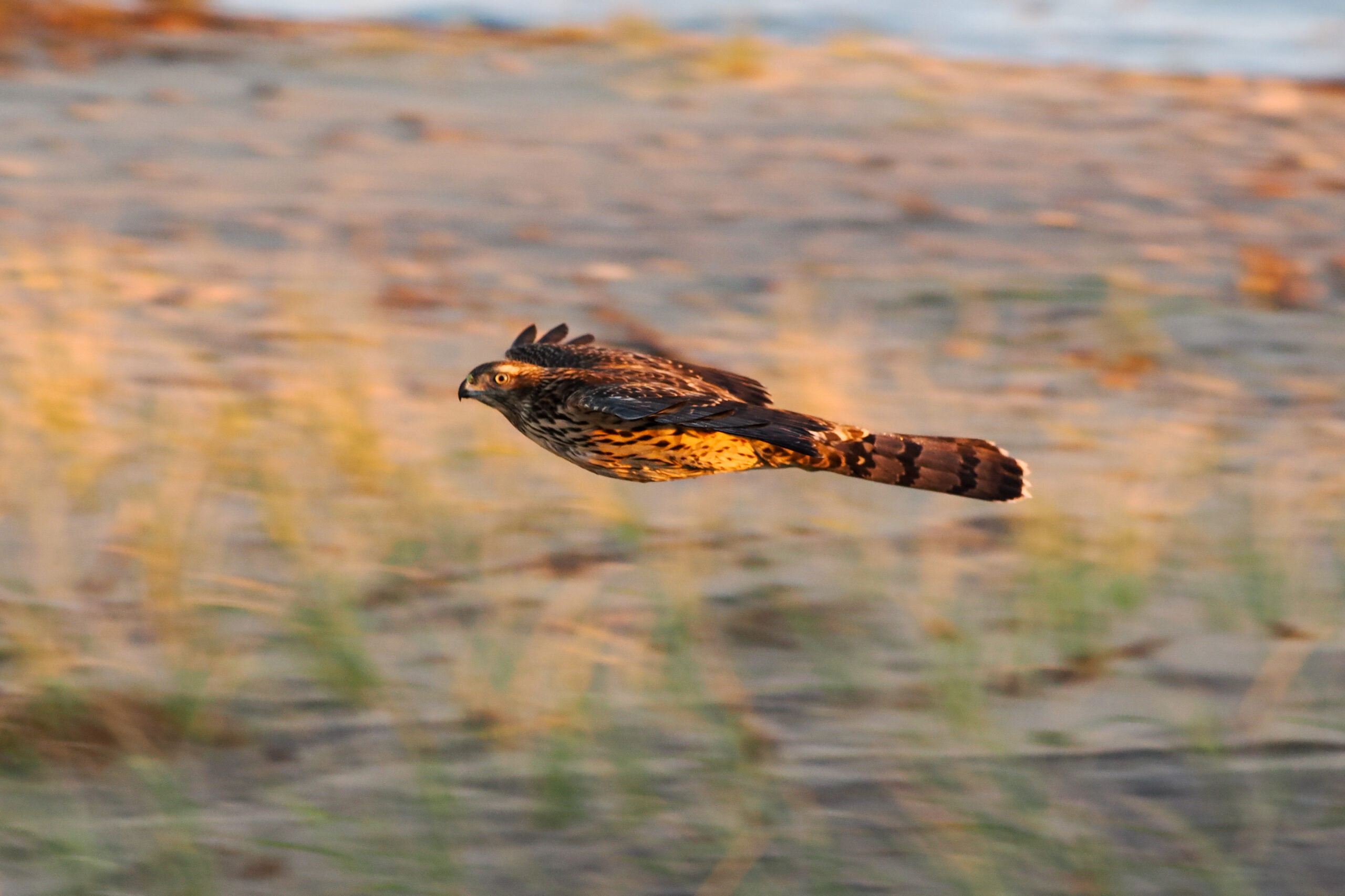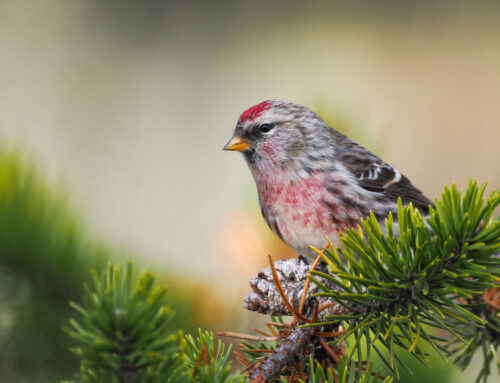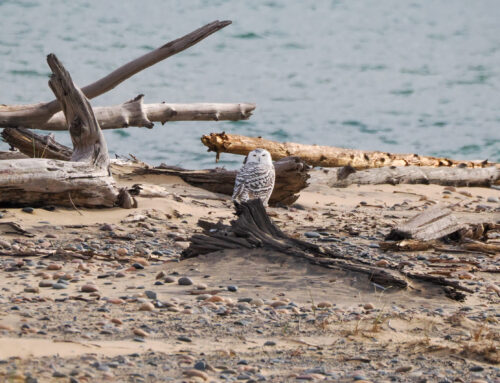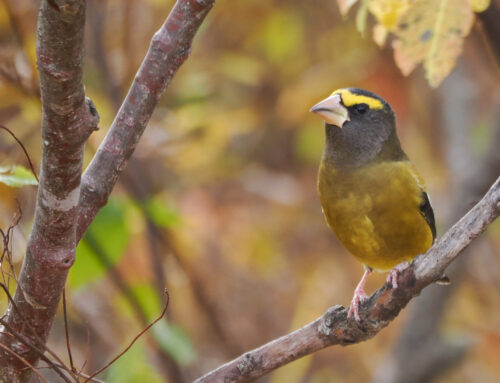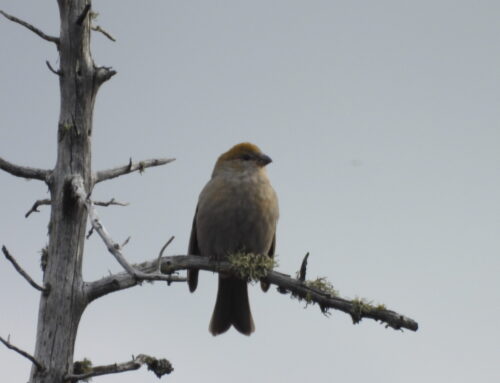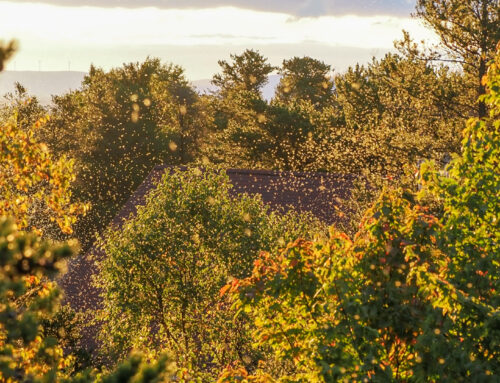This past week brought another stretch of turbulent fall weather to Whitefish Point. Tuesday the 21st opened with heavy rain and strong south winds that made birding a challenge, but conditions changed dramatically as a cold front swept through midweek. From Wednesday through Friday, temperatures hovered in the low-mid 40s, though the wind chill often dipped just below freezing as the winds turned north. The weekend stayed brisk but pleasant, with lighter winds shifting between the west and south. By Monday the 27th, the air had warmed slightly under calm southerly breezes before those winds began to strengthen again late in the day ahead of another round of strong south winds forecast for Tuesday.
Waterbird migration was the main story early in the week, especially from Oct 21st-24th (check out Frank’s blog!), while the 25th-27th turned the spotlight back to songbirds as waterbird movement slowed. Finch numbers in particular saw a noticeable jump, signaling that the long-anticipated winter finch movement is underway. American Goldfinches were easily the most numerous songbird around the Point, but a variety of other finches joined the mix. Flocks of Common Redpolls sometimes reached 30-40 birds, and smaller groups of Evening Grosbeaks, Pine Grosbeaks, Red Crossbills, and Pine Siskins were seen as well. Snow Buntings have now become a regular sight, feeding on the beach and even on the lawn near the parking lot. In contrast, numbers of Lapland Longspurs, American Pipits, and Horned Larks have declined noticeably, along with many other songbirds as the season edges toward its close. Sparrows are now limited mostly to a few American Tree Sparrows and Dark-eyed Juncos, while warblers, including Yellow-rumped, have largely disappeared. Raptor diversity was solid this week, highlighted by several Rough-legged Hawks making their first appearances of the season, along with Red-tailed Hawks, Bald Eagles, and a flyby juvenile American Goshawk on Monday. Northern Shrikes were also observed on multiple days near the waterbird count, marking another first for the fall.
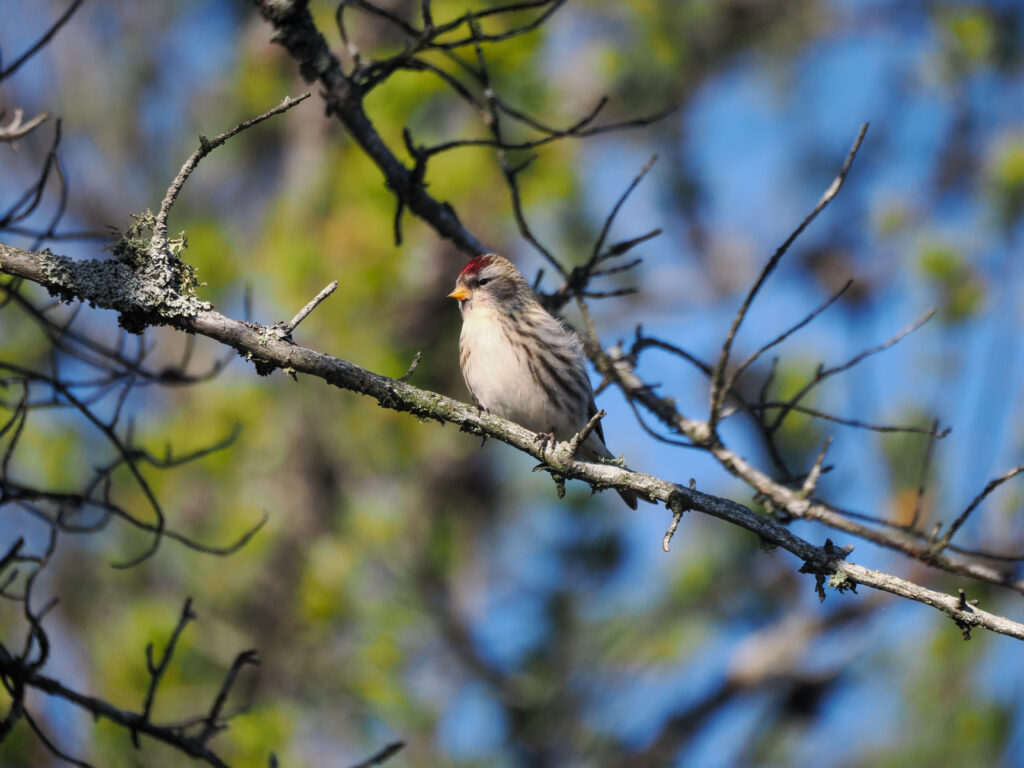
The flocks of Redpolls in the low jack pines are often pretty approachable. Photo by Clay Bliznick.
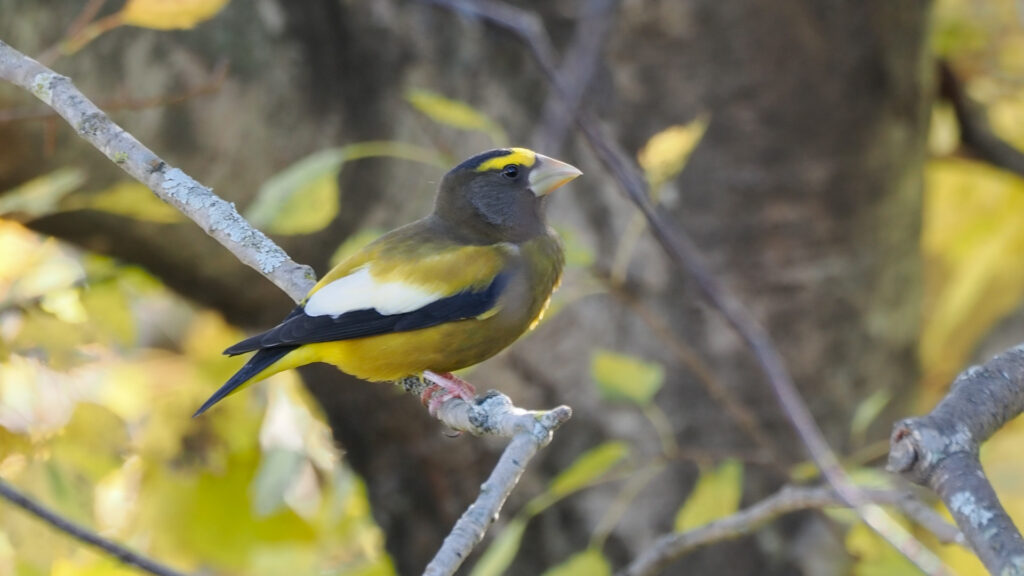
Had a great look at a male Evening Grosbeak as it made its way down towards the bird bath. Photo by Clay Bliznick.
Weekend bird walks benefited from calm, cool conditions and produced a variety of memorable sightings. About fifteen participants joined Saturday’s walk, enjoying excellent views of a perched light-morph Rough-legged Hawk along the shore and a cooperative flock of Common Redpolls working on the cones in tiny jack pines nearly at eye level. Sunday’s group of seven had equally good fortune, with close looks at Pine Grosbeaks feeding on juniper berries only a couple feet off the ground, as well as a brief but satisfying encounter with a Northern Shrike on the beach.
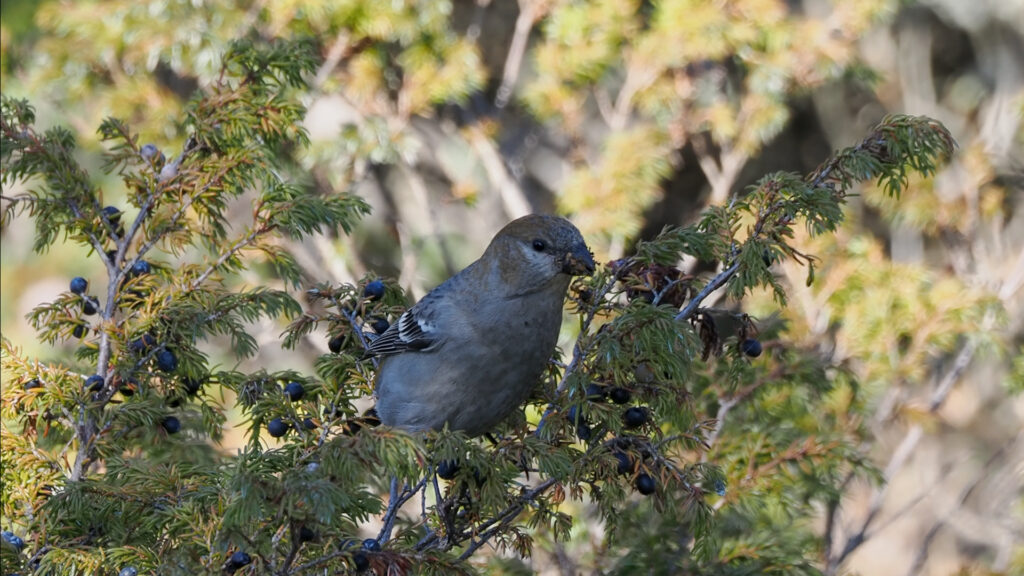
The Pine Grosbeaks have been fairly abundant and often seen foraging on juniper berries in low bushes like this bird. Photo by Clay Bliznick.
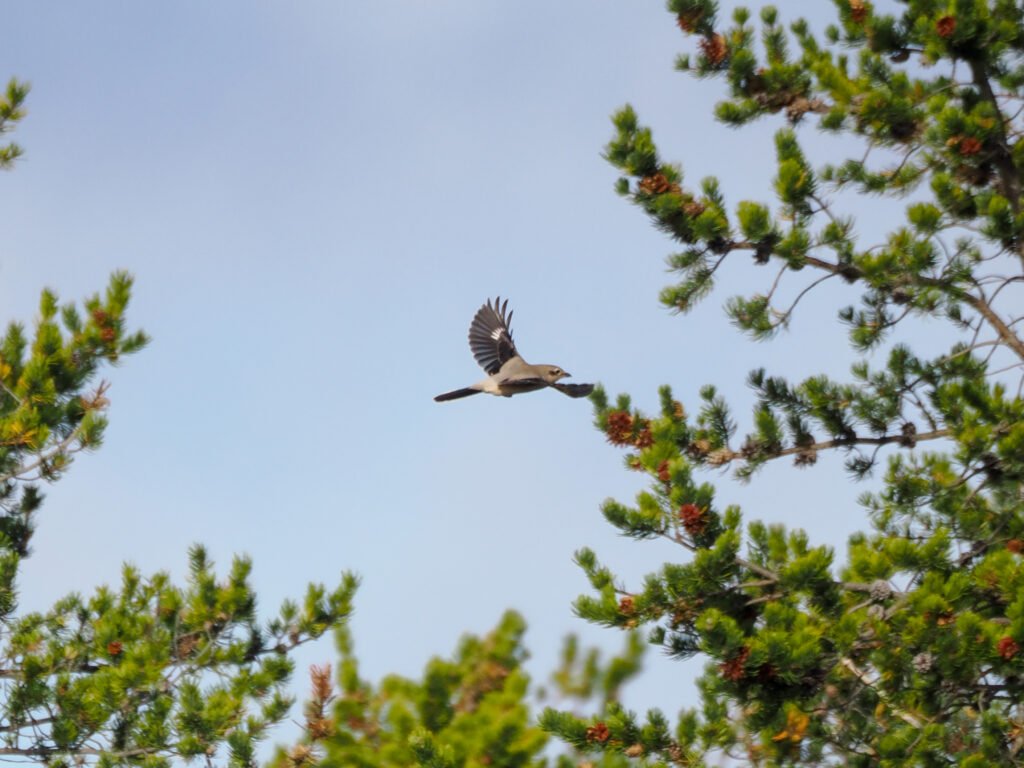
Our first Northern Shrike did not stick around long, but it was long enough to get a photo at least! Photo by Clay Bliznick.
Activity around the feeders has skyrocketed over the past few days. Dozens of American Goldfinches now crowd in daily alongside nuthatches, Evening Grosbeaks, and even a few House Sparrows (an uncommon bird here). The feeders have also drawn attention from other wildlife: a few plump meadow voles have been busy collecting the seed beneath them, while chipmunks seem to have retreated to their burrows for the season. The biggest surprise came on Saturday afternoon when an ermine appeared, prowling through the brush below the feeders, still holding onto its summer colors for a little while longer before winter sets in and it’s coat turns to white. With strong south winds expected to return on Tuesday and Wednesday before shifting east and north later in the week, there’s still plenty of potential for new birds to arrive as October comes to a close.
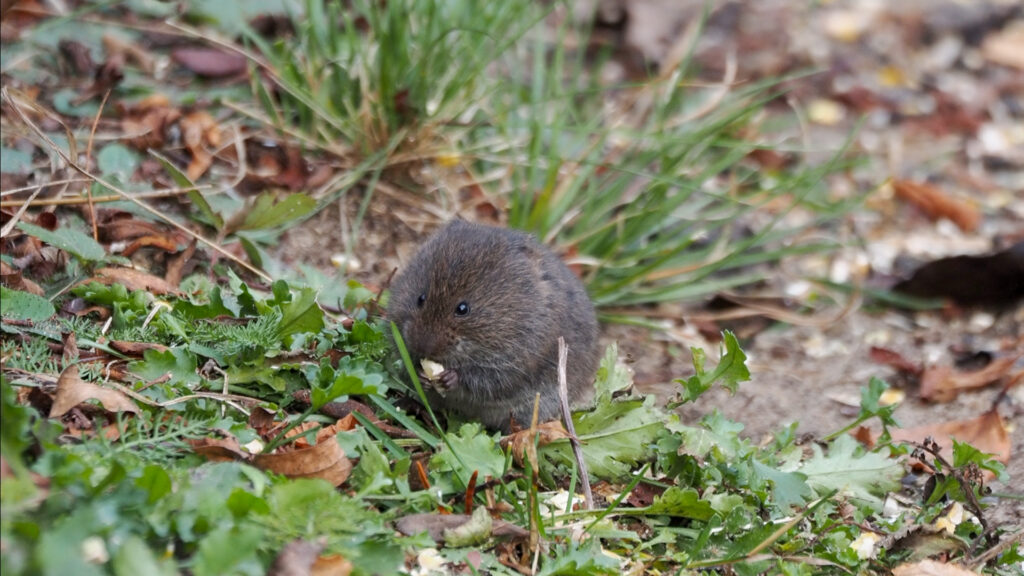
Meadow Vole nibbling on seed one evening this week. Photo by Clay Bliznick.
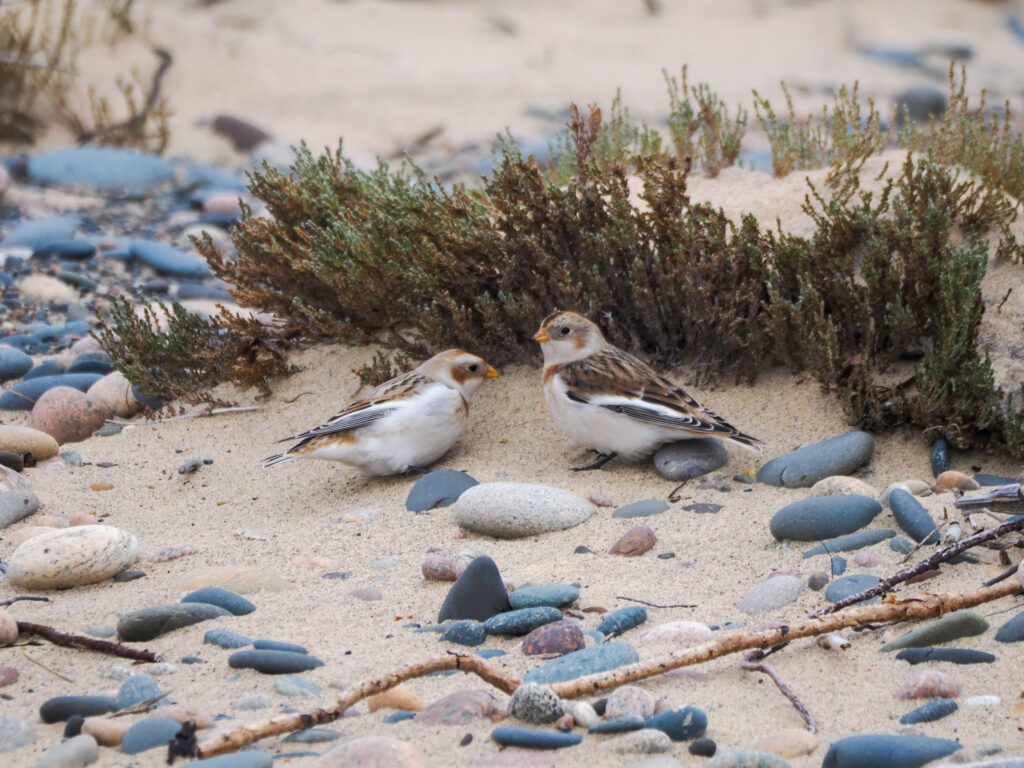
Our first Snow Buntings of the season flying in off the lake and landing on the beach. Photo by Clay Bliznick.
Track the morning flight counts on Trektellen.
Keep up with the 2025 Fall Field Ornithologist’s weekly blog posts and follow WPBO’s social media (Facebook, Instagram, and X).
Join Clay for one of his WPBO Migratory Bird Walks offered every weekend through November 15.
Learn more at wpbo.org/events.
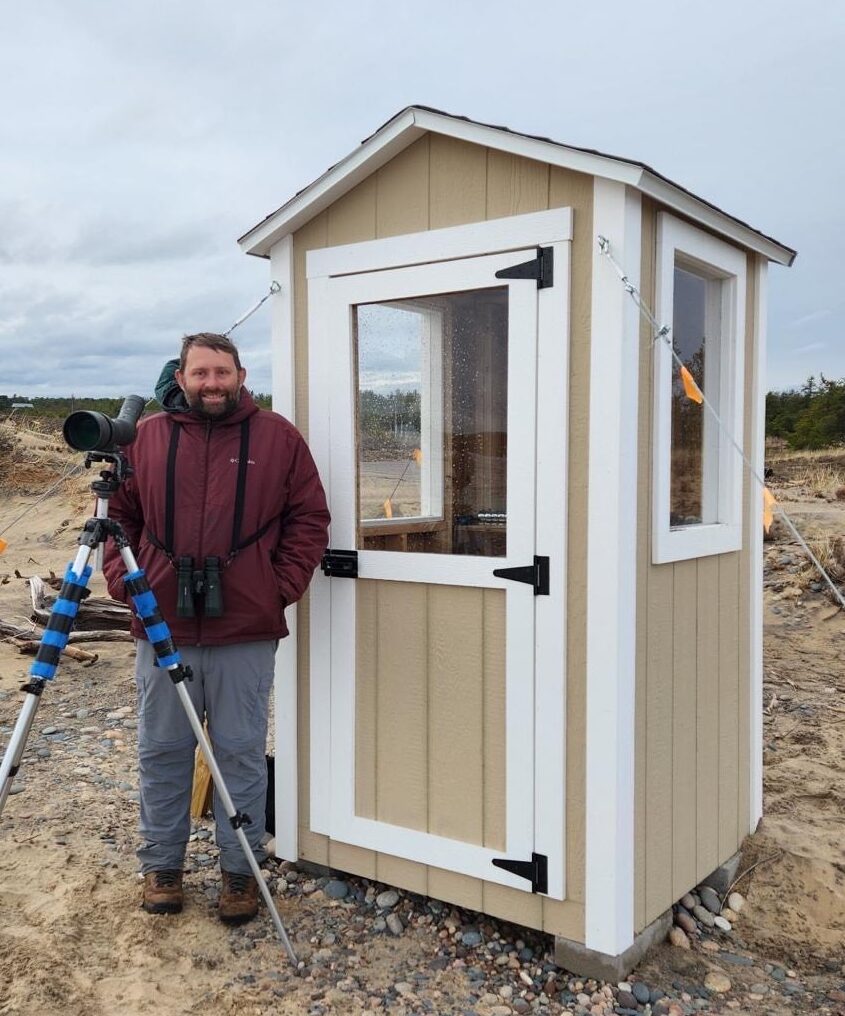
Clay Bliznick, MS: 2025 Fall Field Ornithologist
Clay worked as the WPBO fall field ornithologist in 2024 and is excited to return for the fall of 2025. He first took an interest in birds during a high school trip to Alaska, where he was struck by the flamboyance of magpies, the sleek, penguin-like appearance of alcids, and the sheer number of waterbirds residing along the coast. He dove headfirst into the world of birding while an undergraduate at the University of Kentucky, spending every free second exploring his home state for exciting new birds and places. Afterwards, he attended graduate school at Murray State University and wrote a master’s thesis examining the response of bird communities to environmental factors in Western KY bottomland hardwood forest restorations. For the last several years, Clay has traveled throughout the US working with birds in varying capacities, including nest monitoring of Florida Grasshopper Sparrows and Crested Caracaras, conducting surveys of Swallow-tailed Kite post-breeding roosts, and collecting breeding bird data in North and South Dakota for the Bird Conservancy of the Rockies.

